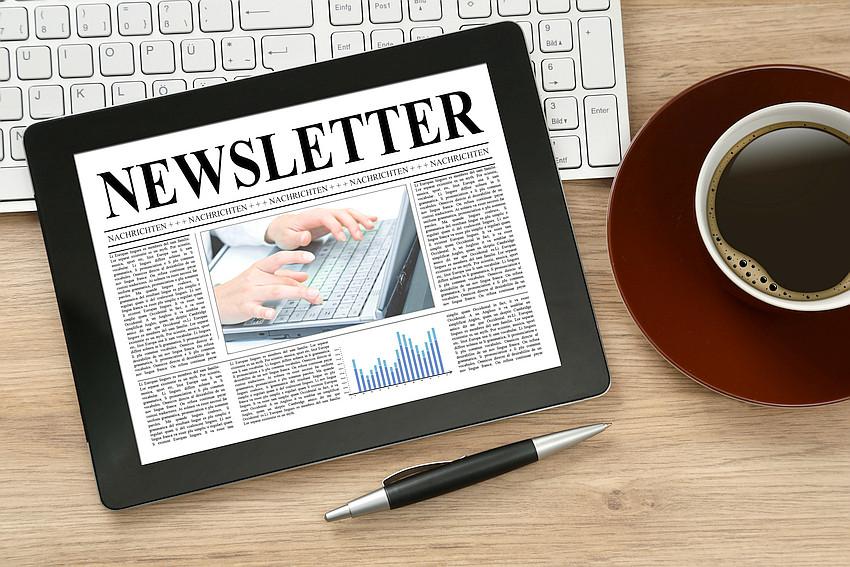While there are thousands of email campaigns that sent each day, the average open rate is 22.86%.
If you’re spending hours gathering content for your next newsletter, that statistic seems depressing.
A marketing newsletter is a great way to connect customers with your brand and encourage them to make a purchase. But how do you get subscribers to click to read it?
Excite and engage them so they’re excited to see your newsletter in their inboxes!
If you’re not creating engaging newsletters, what are you waiting for? Keep reading to learn more about creating content and how to implement newsletter best practices.
How to Create an Engaging Newsletter
When creating a newsletter, it’s important to focus on your target audience at all times.
While you’re deciding how to craft your newsletter, keep these aspects in mind:
- Plan out each newsletter with specific topics in mind
- Create unique subject lines
- Provide content that is educational, informative, and easily understood
- Guide users to your website whenever possible
- End with information about your business, including contact information
Below are seven best practices you should take advantage of.
1. Make Sure Your Subscribers Know What to Expect
It’s never a good idea to spam customers with emails they didn’t sign up to receive. Make sure that customers know they’re signing up for a newsletter.
Besides letting them know what content you’ll be providing, let them know how often they should expect to receive your emails.
And get specific. It might even be wise to include a sample newsletter on your website for this purpose.
2. Get Creative with Content
Potential customers are bombarded with ecommerce emails daily, so you have to make yourself stand out. Have them click and read every time because of unique content.
If you make your email content fun and engaging, it will encourage your contacts to crave more!
One best practice is to always start with a legitimate sender’s name. If it is sent from a randomly generated email address, the receiver’s ESP might reject it. Make sure it’s a name your customers will recognise.
Don’t Forget Your Subject Lines
If you want subscribers to engage with your content, convince them to open your email first.
Some marketers believe that if they send their email with the same subject each week, they will provide a sense of familiarity to their contacts. But this isn’t true. Repeated subject lines get old quickly.
If they know what to expect, there is no incentive for subscribers to click and read your newsletter. They assume it’s more of the same and it goes straight to the trash. Try to create different subject lines for each email you send. Make them want to click to open your email immediately!
3. Always Segment Your Lists
When customers subscribe to your newsletter list, it’s always best to segment it on the back end.
You should segment your lists based on customers’ geographical area, demography, and interests. Then you can group your lists accordingly and reach out to them with little effort. With segmentation, you’ll be able to view data to see which lists perform better than others.
When sending newsletters, go for your most active lists. If you’re trying to engage inactive contacts, your open rate will be lower. This is especially true during the holidays, when people ignore most promotional emails because they receive so many.
Regularly Update Your Contacts
It’s not as easy as collecting subscribers and never touching their profile again.
Contacts are people, therefore they’re dynamic. They will change in all aspects including location, age, preferences, and more. It’s important to recognize these changes. Reviewing your contact lists regularly should be a priority.
You can use these updated lists to provide loyal customers with exclusive, early bird discounts. For new customers, you can go for a “new before” approach.
And when you sell to previous customers, try to suggest products similar to those they’ve purchased in the past. It shows you’re paying attention.
4. Remember: Short and Sweet
You want subscribers to read all of your newsletter, so it needs to be concise and catchy.
Also, don’t underestimate the importance of a powerful introduction.
5. Use Responsive Design
55% of people read emails only on mobile devices. If your email isn’t optimized for mobile, it will go straight in the subscriber’s trash.
If you’re struggling with a mobile-friendly, responsive design, try to stick with single columns, larger fonts, and call-to-action buttons instead of links within the text.
6. Be Consistent
When developing a newsletter campaign, decide when it will go out and stick to your calendar religiously.
Do some research to determine when traffic is low before scheduling any emails. This is trickiest during the holidays, but early morning to midday seems to be an effective window.
If your subscribers are looking for your content and it doesn’t arrive, they may get bored and look elsewhere for what they want.
7. Highlight One Call-to-Action
An effective newsletter ends with a call-to-action (CTA). Try to stick to one thing you would like your contacts to do. This could be clicking through to a product on your website, or asking them to forward the email to their colleagues.
Make your CTA obvious and fool-proof and you’ll see better results.
Try Your Hand at These Newsletter Best Practices
Now that you’re more familiar with these newsletter best practices, it’s time to plan out your next one!
We offer clients professionally designed websites, marketing and advertising services, and more. We’ve tested all the approaches so you can rely on us to expand your company’s digital universe.
We will sit down with you to get to know you and your business. We’ll determine what your needs are and deliver on your expectations. We’re here to answer your questions, so contact us today.





